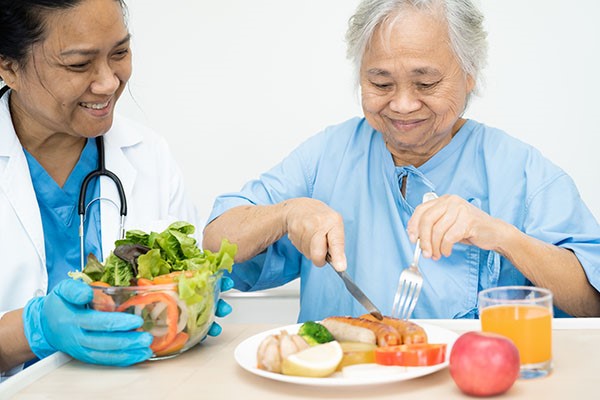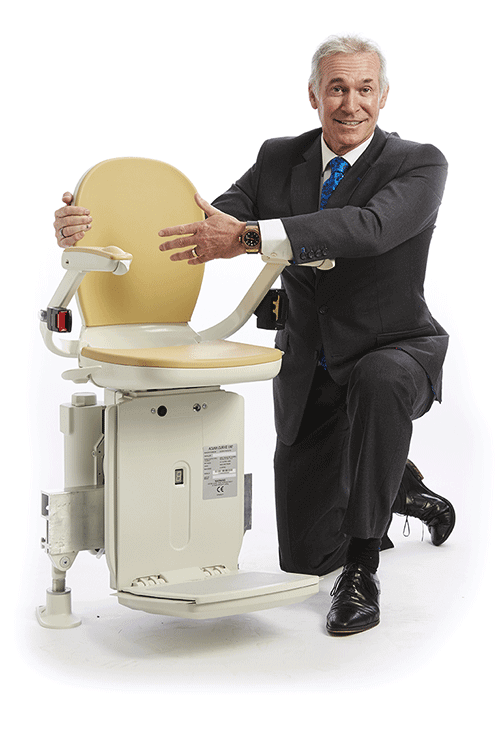As we age, our vision, hearing, memory, and mobility may not be the same as it was when we were young. However, something that we may not think about that also changes as we age is our appetite. While it may be easy to remember the days in your teens when you were a ravenous animal that could clear a refrigerator with ease, factors such as slowing metabolism, weakening teeth, fading memory, and altering taste buds can make the task of eating as a senior much more gruelling.
However, when a senior loses their appetite to the point where they are no longer receiving the proper nourishment for their bodies, this can lead to unhealthy weight loss and loss of muscle mass. Because elderly people already struggle with deteriorating muscle mass and increasing fatigue, a lack of sufficient nutrition can agitate these conditions even more, leaving your loved ones feeling even more weak and tired. For this reason, even if your loved ones may insist that they do not feel hungry or do not feel like eating, it is vital that they are eating regularly and getting the proper nutrition to fuel their bodies.
Read on to learn five tips for getting your loved one to indulge in healthier eating habits and boost their energy levels.
Ways to Encourage Eating a Good Diet in the Elderly
1. Keep on a Consistent Schedule
Our bodies thrive on routine, whether it is with sleeping, exercising, or eating. Setting consistent meal and snack times every day helps trigger hunger, as the body learns to expect food at these times. This natural body response can be a helpful tool to utilise when trying to get your loved one to develop healthy eating patterns, as well as an appetite. Though your loved one may be reluctant to eat regularly at first, their body will eventually adapt to the schedule, and they might even start to look forward to mealtimes or feel like something is missing when they don’t eat.
2. Quality Over Quantity: Make Meals with Nutrient-Dense Foods
 Rather than struggling to force-feed your loved one an overwhelming portion of food, choose quality over quantity. Pick healthy, nutrient-dense foods that are high in calories to assure that your loved one is getting proper and sufficient fuel for their body. If your loved one is not eating enough calories throughout the day, you can add cream, butter, full-fat milk or cheese, peanut butter, avocado, etc. to a meal to bulk it up. If your loved one is still struggling to finish their meals or get the proper nutrition for their body, there are a variety of multivitamins or food supplements for the elderly that can be taken with or in the place of a meal to help.
Rather than struggling to force-feed your loved one an overwhelming portion of food, choose quality over quantity. Pick healthy, nutrient-dense foods that are high in calories to assure that your loved one is getting proper and sufficient fuel for their body. If your loved one is not eating enough calories throughout the day, you can add cream, butter, full-fat milk or cheese, peanut butter, avocado, etc. to a meal to bulk it up. If your loved one is still struggling to finish their meals or get the proper nutrition for their body, there are a variety of multivitamins or food supplements for the elderly that can be taken with or in the place of a meal to help.
3. Add More Liquid Foods to Their Diet
Oftentimes, solid foods can be dense and difficult to chew for elderly people that already struggle with eating. This is especially true when the senior experiences pain when eating or difficulty swallowing. A way to get around this challenge is by packing the calories and nutrients into liquids that are easier to swallow such as soups, shakes, and smoothies. The great thing about soups, shakes, and smoothies is that there are endless combinations of ingredients that can really add variety to someone’s diet.
4. Find Your Loved One’s Favourite Foods
It’s no surprise that people tend to eat more when they are enjoying their food. For seniors that may dread mealtimes, it’s essential to find healthy, nutrient-dense foods that are also enjoyable to eat. Ask your loved one what some of their favourite foods are and try to incorporate them into their meals. If their favourite foods don’t have a lot of nutritional value, you can always modify them to be healthier, contain more calories, or provide more vitamins and nutrients for their bodies. It is also important to note that people often eat with their eyes first so food presentation matters. Making a senior’s meal look more visually appealing or colorful can captivate their interest and encourage them to eat more.
5. Choose Foods That Are Easy to Eat
Choosing the right foods for the elderly that have no appetite is a must. This doesn’t just have to do with the taste or nutritional value of the meal but also how easy it is to actually eat the food. For example, foods that require utensils, peeling, or cutting can make eating more frustrating and difficult for seniors, especially for loved ones that may have Arthritis, Parkinson’s, Essential Tremor Disorder, etc. Similarly, foods that are hard to chew can discourage them from eating. For this reason, choosing soft foods for the elderly, as well as finger foods that can be eaten without utensils can drastically improve your loved one’s willingness to eat.
Bonus Tip: Increase Loved One’s Independence and Stimulate Appetite with a Stair Lift
Another important tip for stimulating appetite in seniors is by getting them to exercise and move around more. Increasing activity gets the body working more, thus revving metabolism and increasing appetite. You can encourage more movement within the home and in general by installing stairlifts for seniors that increase their independence and ability to comfortably move around safely and with ease.
Acorn Stairlifts NZ prides itself on the fact that we change a life every eight minutes. That is because every eight minutes, somewhere in the world, one of Acorn’s stairlifts is being installed into someone’s home. Every eight minutes, one more person breaks free from the bondage of fear, dependency, and immobility. Acorn stairlifts are personalised to fit your home and needs. Offered in a variety of bespoke models, Acorn stairlifts fit 99 percent of staircases whether narrow or wide, short or long, indoor or outdoor, straight or curved.
Contact Acorn Stairlifts today to get a free quote and home survey and start living your life to the fullest.

